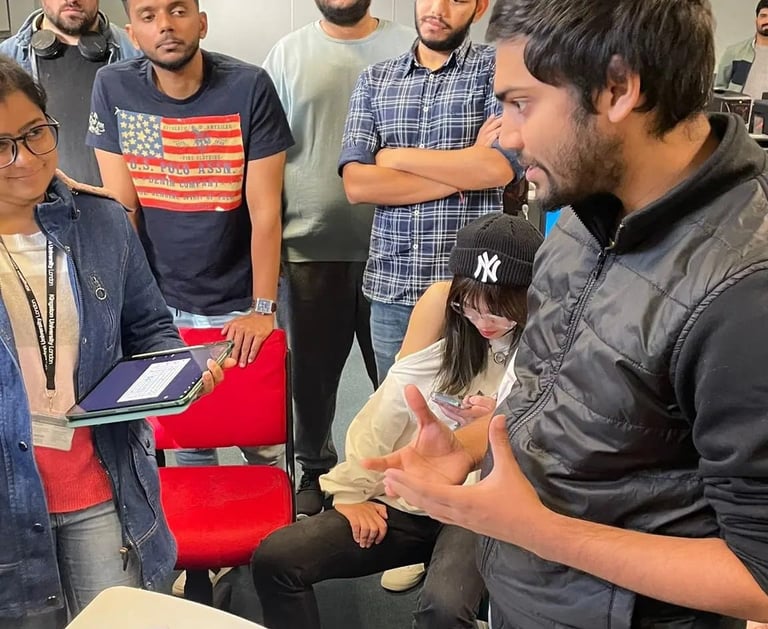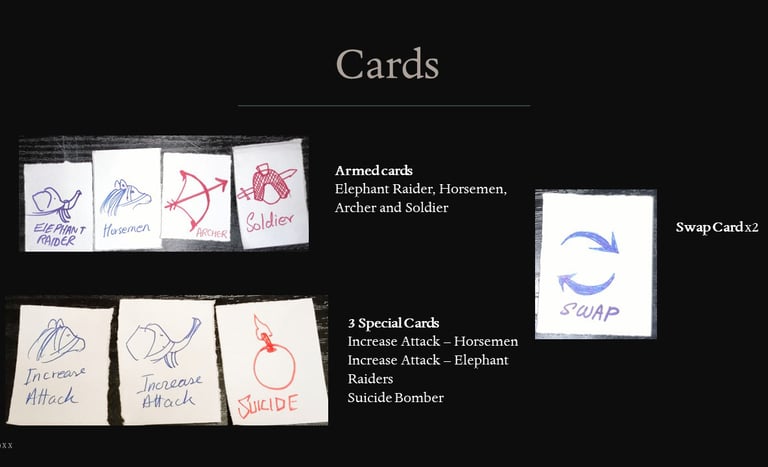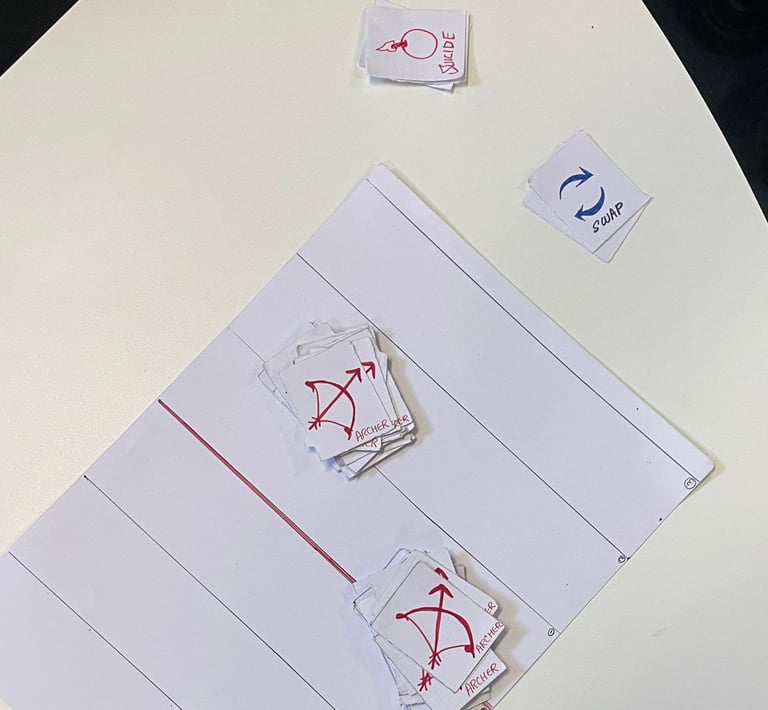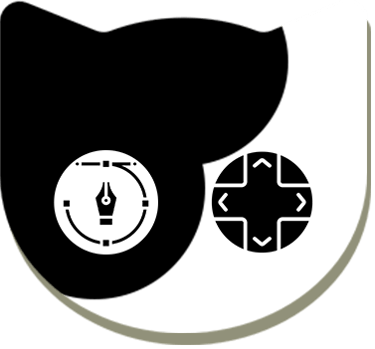A kingdo(o)m of 3: Paper Prototype Experience
Describing my experience about designing an analog game with the help of paper prototype!
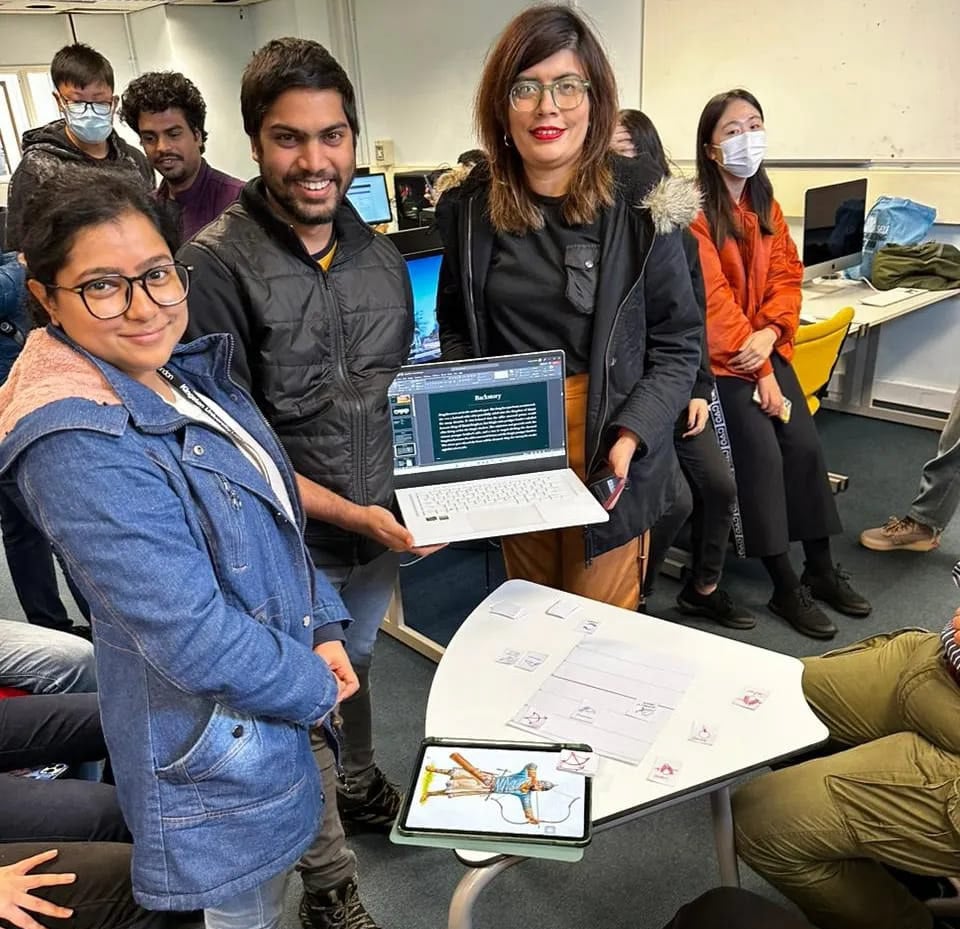

Day 1: We were introduced to paper prototyping by Dr. Jarek Francik as a part of the Game Design Module. From looking at game mechanics for game design, he guided us on how to develop a paper prototype.
The challenge: Develop a paper prototype that focuses on game play in 2 weeks. Since it was a new module, we were encouraged to work in groups to brainstorm for the analog game paper prototype.
The Team: The concept of playing with a group of strangers in a module-long time-frame sounded quite lucrative as I joined alliances with Zoha Azmi and Sidhvi Gandikota.
Brainstorming/The germ of an idea
Every great kingdom is built on a strong foundation and our journey was no different. We began ours by researching (read playing) board games from the university’s gaming society. After spending hours researching games like Secret Hitler, Exploding Kittens and more, we started noting down our ideas.
It is then Sidhvi stumbled upon a game called AVALON. Built on a mythological theme and following a quest system, we took a leap of faith and dived deeper into its mechanics. This game truly inspired our brainstorming sessions to come.
Ideation/Monarchy comes with a lot of achey
The next few days involved about a million video calls, spent on sketches of the game and its game play, back and forth over ideas. Some of the ideas were bright, some dim, and some were best swept under the rug.
Our initial prototype was inspired by games like Sequence and AVALON. Unfortunately, in our enthusiasm to create a game that was immersive it failed as it turned out to be quite complex. During this phase we also were exposed to Catan. This game showed us what a good backstory and objective can achieve for a game.
Armed with this knowledge, we decided to go back to our roots and take inspiration from the rich culture of the sub-continent we hailed from. The three of us were raised on a staple of stories that involved kings, kingdoms, and their constant efforts to save their kingdoms from internal and external threats.
This fusion of culture gave birth to an idea, one about a kingdom that is doomed at the start. A turn-based tower defence where the true king has to reclaim his throne from the evil wizard-brother.
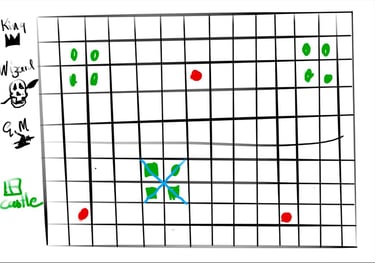



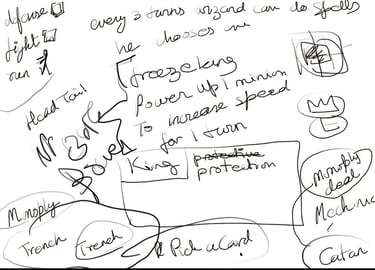

Rough sketches where our team jotted down game play and our ideas
Re-iteration for Kingdo(o)m prototype
After playing a few rounds of the prototype, we determined that the game was either slow-paced or fast-paced and lacked potential to grow. So, unlike any other monarch in history, we decided to head in a completely new direction.
After taking inspiration from countless articles and videos regarding card-based games such as Condottiere, Gwent, and Dune, we took the base concept of two armies fighting with each other with 3 grids on each side.
The objective was to get players to progress toward their opponents using their cards. Each player had their own health and attack points on the card. The game play was simple enough for people to pick it up and yet included a layer of complexity- each player chooses nine cards from a deck of 16 cards. Additionally, they need to pick a few bonus cards to change the tide of this game. The end goal was for players to conquer most of the opponent’s army in order to win.
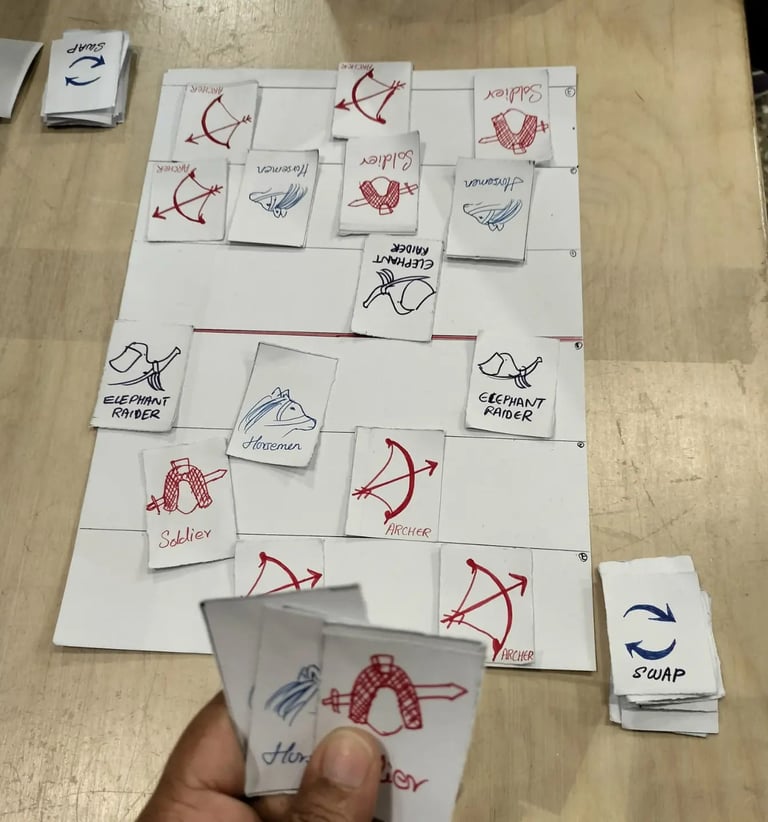

My role in Kingdo(o)m’s game design
My contribution was to fine-tune our team’s idea and set up a game narration for it, upon which the members of the team finalised the setting after a few discussions. Then, once the base of the game was laid out, I implemented the game narration. This included the backstory, components and goal of the game, setup, the game play, and the instructions for the cards for understanding the game. Zoha, my teammate furthermore added visual appeal to our game with her design skills, making it look closer to the final game.
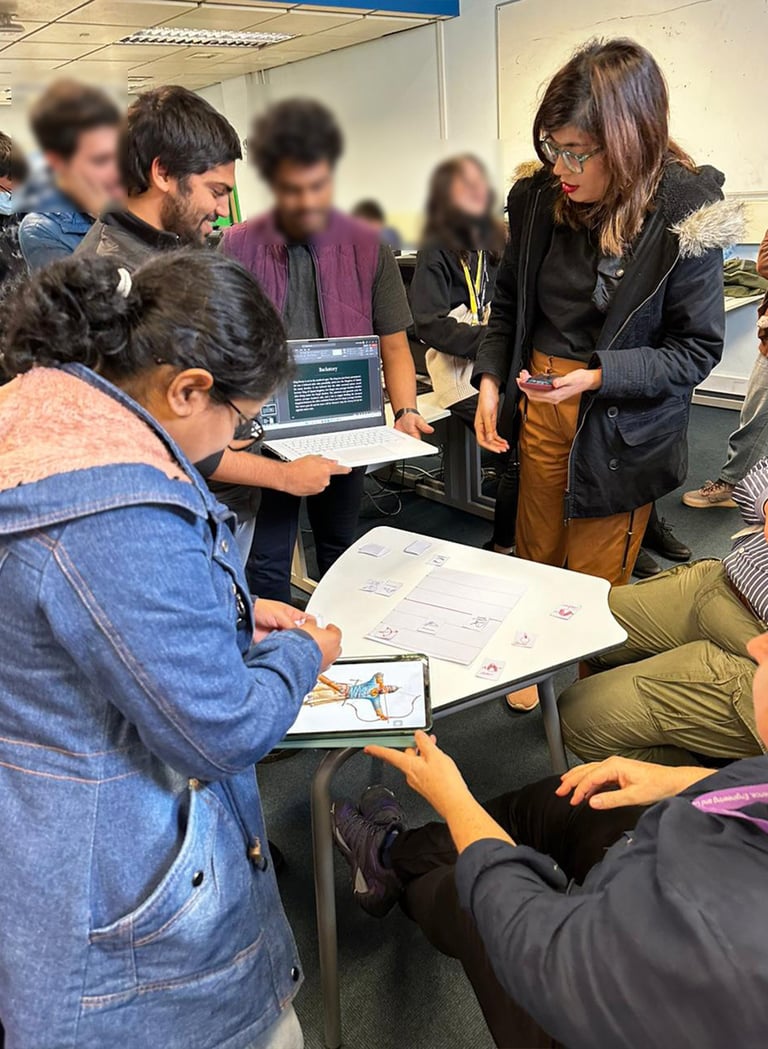

Takeaway
The game prototype and concept gained more clarity as we made progress with tweaks and repeated game play. Despite being a two-player game, the progression and strategy involved make it quite engaging. A variation of cards, particularly the special cards could make it even more challenging.
Building a Kingd(o)om is way beyond a single person’s effort. Paper prototyping exercises enhanced my understanding of user-experience, game play, and mechanics of different iterations of the game. However, working with an enthusiastic team strengthened my ability to accomplish tasks considering diverse opinions. Strong working relationships and effective communication was the key to our successful prototype iterations.
The project was presented to our professors Dr. Jarek Francik and Prof. Hope Caton. Overall, we received positive feedback for the progress of building our Kingd(o)om except for the challenge of implementing it digitally. We hope to address this feedback and fine-tune the game as it develops with iterations.
Here are some more images of our presentation!
